Vegetation blankets – the ideal alternative to plugs and cuttings for green roofs
Posted on Thursday 23 July, 2020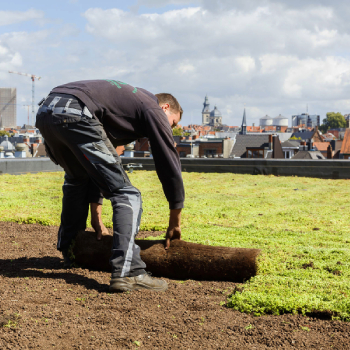 You are thinking of ordering or installing a green roof, but you’re not sure whether you should use vegetation blankets, plugs, or cuttings. Or maybe you’ve been using plugs or cuttings in the past to install green roofs and would like to know more about the advantages of vegetation blankets. Well, you’ve found the right article. Here are all the benefits of vegetation blankets compared to plugs and cuttings in a row.
You are thinking of ordering or installing a green roof, but you’re not sure whether you should use vegetation blankets, plugs, or cuttings. Or maybe you’ve been using plugs or cuttings in the past to install green roofs and would like to know more about the advantages of vegetation blankets. Well, you’ve found the right article. Here are all the benefits of vegetation blankets compared to plugs and cuttings in a row.
Instant green
By far the most important argument: vegetation blankets create instant green roofs as soon as they are rolled out. Green roofs planted with plug plants or cuttings take an average of 2 to 3 years to achieve the same result as vegetation blankets. It can even take longer in warm climates because the substrate can become very hot when exposed to the sun. Plants cannot grow over a hot substrate.
Text continues after image.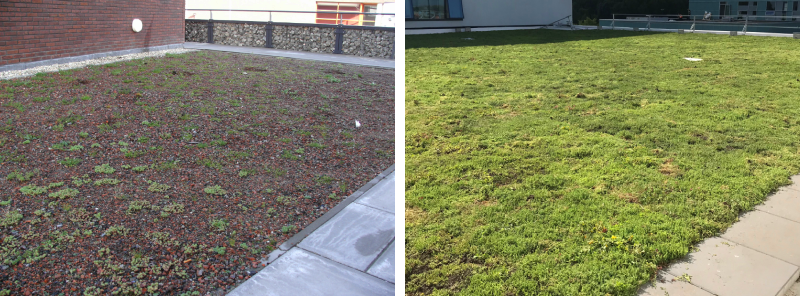 Freshly installed roofs with plugs (left) and vegetation blankets (right)
Freshly installed roofs with plugs (left) and vegetation blankets (right)
Less substrate
The substrate on green roofs with plug plants and cuttings must be 2-3 cm thicker than the height of the ball of soil on the plug plants, which is approximately 6 cm. This means that a minimum substrate layer of 7-8 cm is required. Too much substrate can encourage weeds to grow on the already almost empty substrate and take over the roof. Green roofs made up of vegetation blankets do not require as much substrate and can’t be overrun by weeds.
Text continues after image.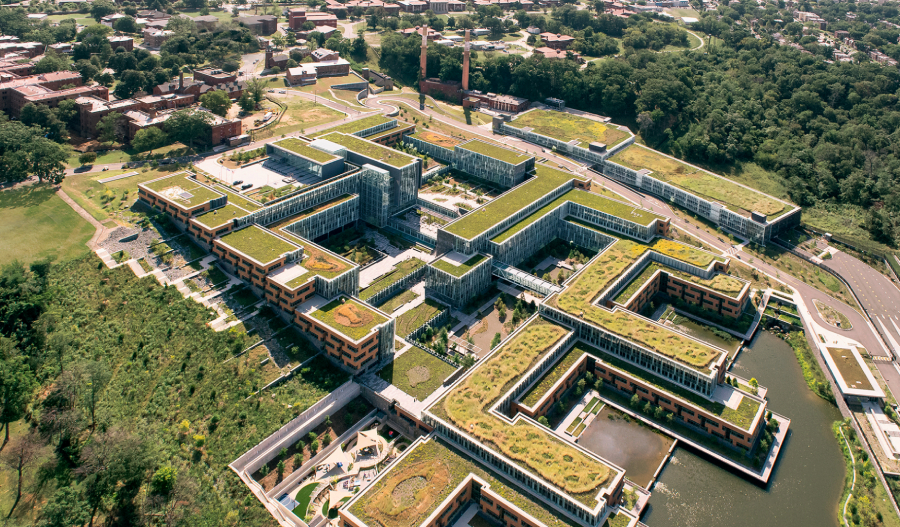 Green roofs with vegetation blankets can come in all shapes and sizes
Green roofs with vegetation blankets can come in all shapes and sizes
Lightweight
Because green roofs with vegetation blankets require less substrate (approximately 5 cm), their weight is considerably lower. Green roofs with plug plants and cuttings are often 60% heavier than green roofs with vegetation blankets.
Installation all year round
Vegetation blankets can be installed all year round - even during winter months, except when it’s freezing. Cuttings can only be planted in spring and autumn, if there are any cuttings available, and only in the right weather conditions, which is shifting due to climate change.
Text continues after image.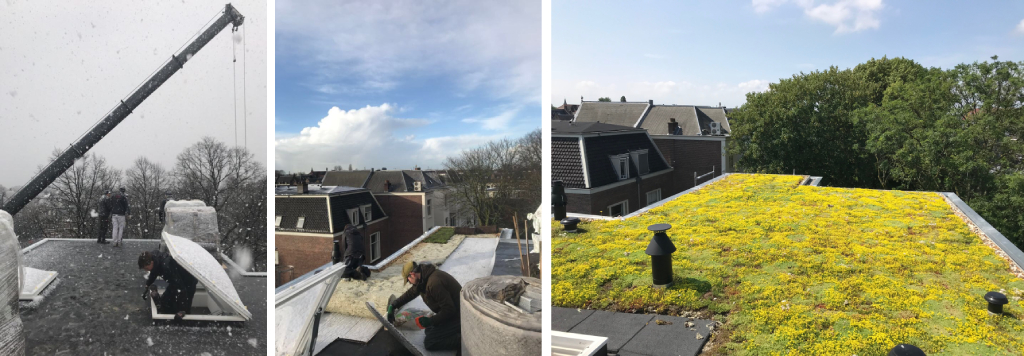 Installation of a green roof in winter and the beautiful result in spring
Installation of a green roof in winter and the beautiful result in spring
Lower maintenance costs
A roof is not a native environment for plants. It is dryer, hotter and there is more wind than on the ground. This means that it is more difficult to grow plants on roofs, especially from plugs and cuttings, because in their first year the young plants need a lot of care and help growing up.
Because they are at least 95% pregrown, the plants on the vegetation blankets are a year old and their roots already established. That is why they give you a quick and direct green result. This also means that, for a year or more, they’ve received quality care from the grower in the nursery. After installation, the blankets are low maintenance and hardly allow any weeds to grow. Roofs with plugs or cuttings, on the other hand, need a lot of maintenance.
For example, because their roots are shorter, plugs and cuttings require more water and fertiliser over a longer period than ready to lay vegetation blankets, which have an already a fully established root system. In addition, they need to be checked regularly to make sure any dead plants are replaced and weeds are removed. The latter is a result of the fact that the a big part of the roof doesn’t contain any plants after installation, so weeds have a lot of space to start growing on the empty substrate, stealing space from the plugs and cuttings.
Wind erosion
Vegetation blankets suffer very little wind erosion because the underlying substrate is covered entirely by the vegetation blankets. Initially, 95% of the substrate on roofs with plug plants or cuttings is exposed. The substrate is largely made up of a mixture of (lava) pebbles. Strong winds or storms can blow these pebbles off the roof, damaging the surroundings such as cars parked alongside the building.
Text continues after image.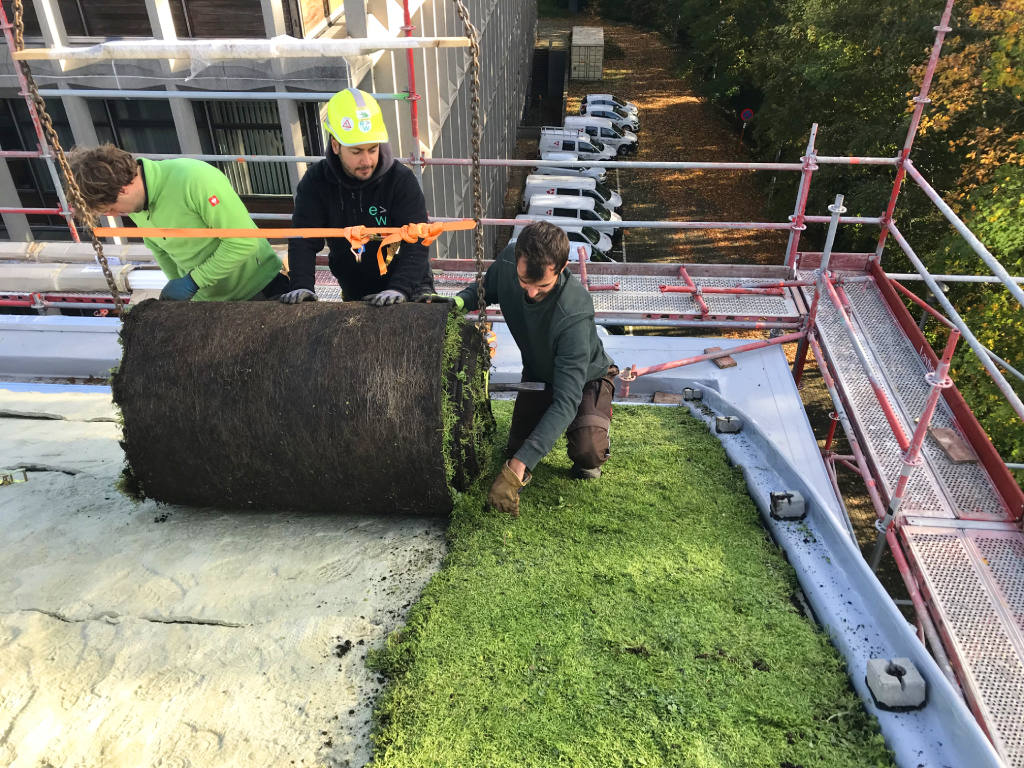 You can easily install vegetation blankets on a curved roof
You can easily install vegetation blankets on a curved roof
Cooling effect
An important advantage of green roofs is their cooling effect during the summer. Contrary to green roofs with plug plants or cuttings, green roofs with vegetation blankets let you enjoy this advantage straight away. For the most part, green roofs with plugs and cuttings initially consist of substrate. Uncovered substrate becomes very hot when exposed to the sun, negating the cooling effect of the plants.
In other words: if you install vegetation blankets on your green roof you can immediately enjoy their benefits!
Would you like to know more about green roof vegetation blankets?
Would you like to learn more about vegetation blankets or Sempergreen green roof systems? Get in touch with us today to discuss your project and receive our free advice.
Request a free quote Contact Sempergreen
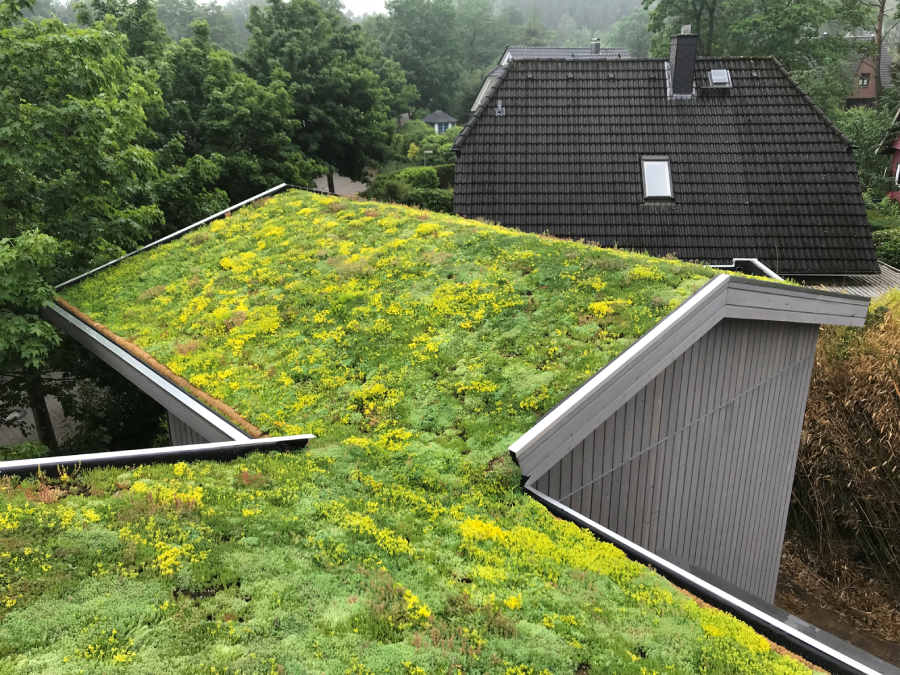 Vegetation blankets are also suitable for sloping roofs
Vegetation blankets are also suitable for sloping roofs
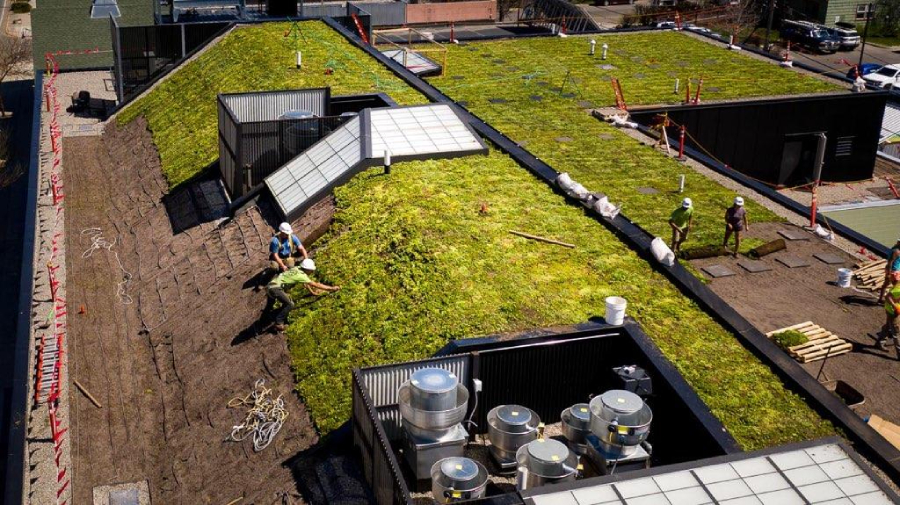 Roofers placing vegetation blankets on a sloped roof
Roofers placing vegetation blankets on a sloped roof
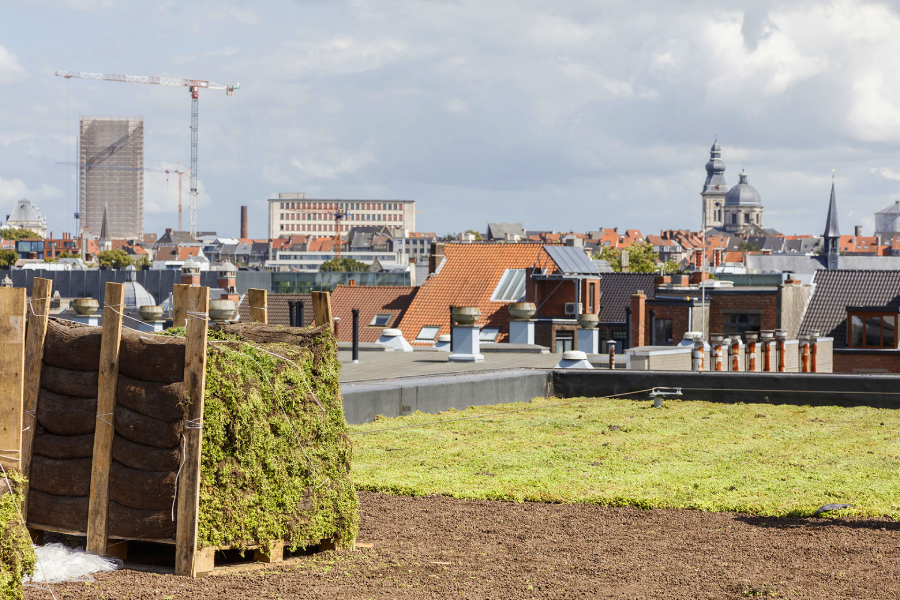 Pallet with rolled-up vegetation blankets on a flat roof
Pallet with rolled-up vegetation blankets on a flat roof
